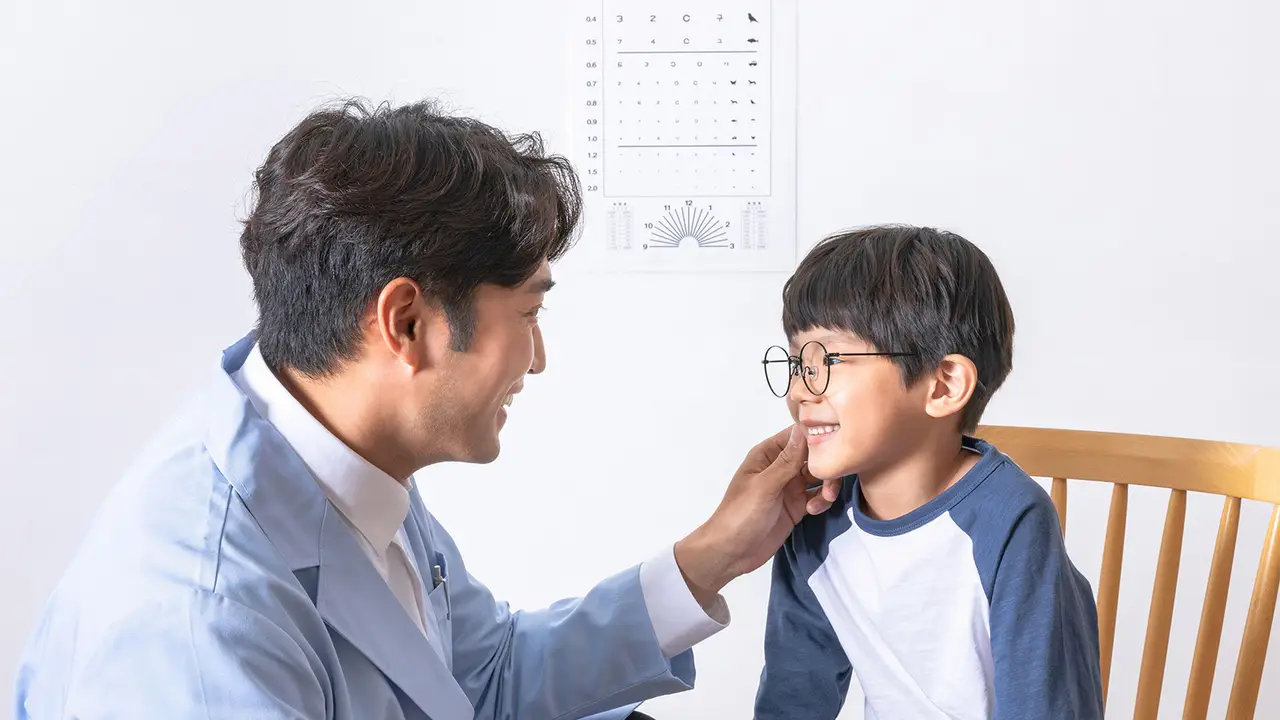
DiYES International School – Astigmatism in kids is a common refractive error that affects how they see the world around them. It occurs when the cornea, the clear front surface of the eye, is not evenly shaped. Instead of being round, it may be more oval, which causes blurry or distorted vision. This condition is often present from birth and can vary in severity. Parents may not realize that their child has astigmatism until they show signs of visual discomfort. Early diagnosis and treatment are essential to help children see clearly and avoid future eye strain.
Astigmatism is a refractive error in which the cornea or lens of the eye is unevenly curved. Normally, the cornea is spherical, like a basketball. However, in children with astigmatism, the shape is more like a football, which causes light to focus on multiple points in the eye. As a result, objects appear blurred or distorted. Astigmatism can occur in combination with other refractive errors like nearsightedness (myopia) or farsightedness (hyperopia).
“Read about: Crohn’s Disease: Causes, Symptoms, and Treatment Options Explained”
Children with astigmatism may struggle to see clearly, both up close and at a distance. Some common symptoms include squinting, frequent eye rubbing, headaches, and difficulty reading the board in class. Kids may also have trouble focusing on objects and might complain of eye strain. In more severe cases, they may experience double vision. Parents should be aware of these signs and seek an eye exam if they suspect their child has vision problems.
Astigmatism is usually hereditary, meaning it is passed down from parents to their children. It can be present from birth or develop during early childhood. In some cases, the condition may change over time. Although most cases of astigmatism are not caused by any injury or disease, some children may develop the condition after eye surgery or trauma. The exact cause of astigmatism in each individual child may vary, but it typically relates to the irregular shape of the cornea.
Astigmatism can be diagnosed during a routine eye exam with an optometrist or ophthalmologist. The doctor will perform tests to measure how light is focused on the retina. One of the most common tests is called a keratometry, where a device is used to measure the curvature of the cornea. Another test is the refractive error test, which helps determine how the child’s eyes focus light. Regular eye exams are important for detecting astigmatism, especially in children who may not complain about their vision.
There are several treatment options available for children with astigmatism. The most common treatment is corrective eyewear, such as glasses or contact lenses. Prescription glasses can help children see clearly by compensating for the uneven shape of the cornea. Special cylindrical lenses are often used to correct the distortion caused by astigmatism.
For children who are unable or unwilling to wear glasses, contact lenses may be an alternative. Special toric lenses are designed specifically for astigmatism and provide clearer vision. If glasses or contacts do not fully correct the condition or if astigmatism is severe, surgery may be an option. Refractive surgery, such as LASIK, is generally not recommended for children due to their still-developing eyes.
“Read more: Osteochondritis Dissecans: How This Joint Condition Affects Kids and Adolescents”
While astigmatism cannot always be prevented, regular eye exams can help detect the condition early. Parents should make sure their child has a comprehensive eye exam before starting school and periodically after that. Early intervention can help prevent complications and ensure proper vision development. Ensuring a child’s eye health is monitored throughout their childhood can also identify other vision problems early on.
It is essential to provide children with the proper tools to care for their eyes. Encourage them to wear their glasses or contact lenses as prescribed and protect their eyes from injury. Avoiding excessive screen time and ensuring proper lighting for reading can also reduce eye strain.
Astigmatism in kids is a condition that can impact their daily activities and academic performance. Early diagnosis and treatment can help improve their quality of life. By wearing corrective lenses or using other treatments, children with astigmatism can see clearly and participate fully in school and play. Regular eye exams are vital to detect astigmatism and ensure that children’s vision remains healthy.